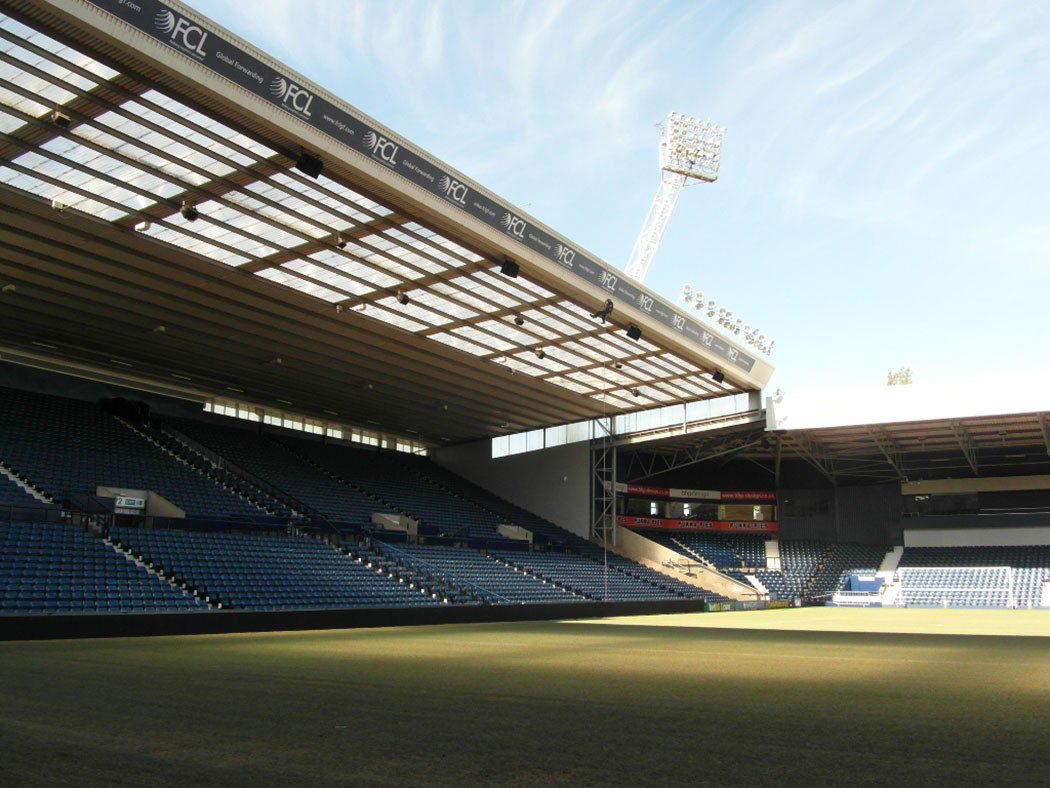
Getting to the Nuts & Bolts of the Matter!
21/09/2015 - posted in HBPW News, Inspections, Leisure, Sports West Bromwich Albion’s Hawthorn Stadium has been given the green light by HBPW’s engineers following a detailed ‘nuts and bolts’ inspection of the century old structure.
West Bromwich Albion’s Hawthorn Stadium has been given the green light by HBPW’s engineers following a detailed ‘nuts and bolts’ inspection of the century old structure.
‘The Hawthorns’, which officially opened 115 years ago and once boasted a 65,000 crowd capacity, has to be inspected – as do other soccer stadiums – under the 1999 Standing Committee on Structural Safety (SCOSS) recommendations.
Associate Paul Jacklin, who headed up the project, said: “Most years a general ‘walk round’ inspection suffices, however, periodically, a more detailed inspection has to take place and that was completed during the 2015 closed season this time round.”
Four stands were given a detailed overview including the Birmingham Road, Smethwick Road, Halford Lane (West) and Millennium (East) ends of the large structure, now officially capable of holding just over 27,000 since becoming an all seater ground in 1995 in the wake of the Hillsborough disaster.

“On the face of it, it may appear like a relatively straightforward assignment,” said Paul, “however, in practical terms, all areas of the grand stand structures have to be inspected ‘within touching distance’ for defects such as loose bolts and steel corrosion. Consequently specialist access measures were required to reach all areas of the structures and a combination of roped and conventional access techniques were used.
“A loose bolt, for instance, falling from height, can cause injury or untold damage so periodic detailed inspections of this type are a paramount safety requirement.” The Hawthorns’ corner infills between the main four stands were also inspected as part of the project.
The Black Country venue was the first Football League ground to be built in the 20th Century and was opened on September 3, 1900 after construction work lasting just four months.
The club’s move to The Hawthorns came when the lease expired on the old Stoney Lane ground. It was sited on the old Hawthorns Estate, and hawthorn bushes had been grown there in the past, so the name was especially appropriate. It was also the first ground in Britain to have an electronic turnstile aggregator fitted in 1949.

